National Constitution Center in Philadelphia
This is the third of four posts I am writing about Alison’s and my visit to the great city of Philadelphia, which has long been on our ‘must do more than drive by’ list for years. The first was on Longwood Gardens which anyone with the remotest interest in horticulture must visit at least once in a lifetime and the second on Independence National Historic Park where one can honestly say the United States was born. The two seminal events in the creation of the new nation were the Declaration of Independence in 1776 and the drafting and ratification of the United States Constitution in 1787. Both documents have been a guiding light for both Americans and many other democratic nations for over 230 years. You learn about the historical events surrounding the Constitutional Convention while visiting Independence Hall and Congress Hall, but you do not get the story of how the U.S.Constitution has evolved over the years, how it has shaped American and worldwide events and why it is as relevant today as it was when first ratified. To get that story you need to cross to the other side of Independence Mall and visit the National Constitution Center. Here’s why.
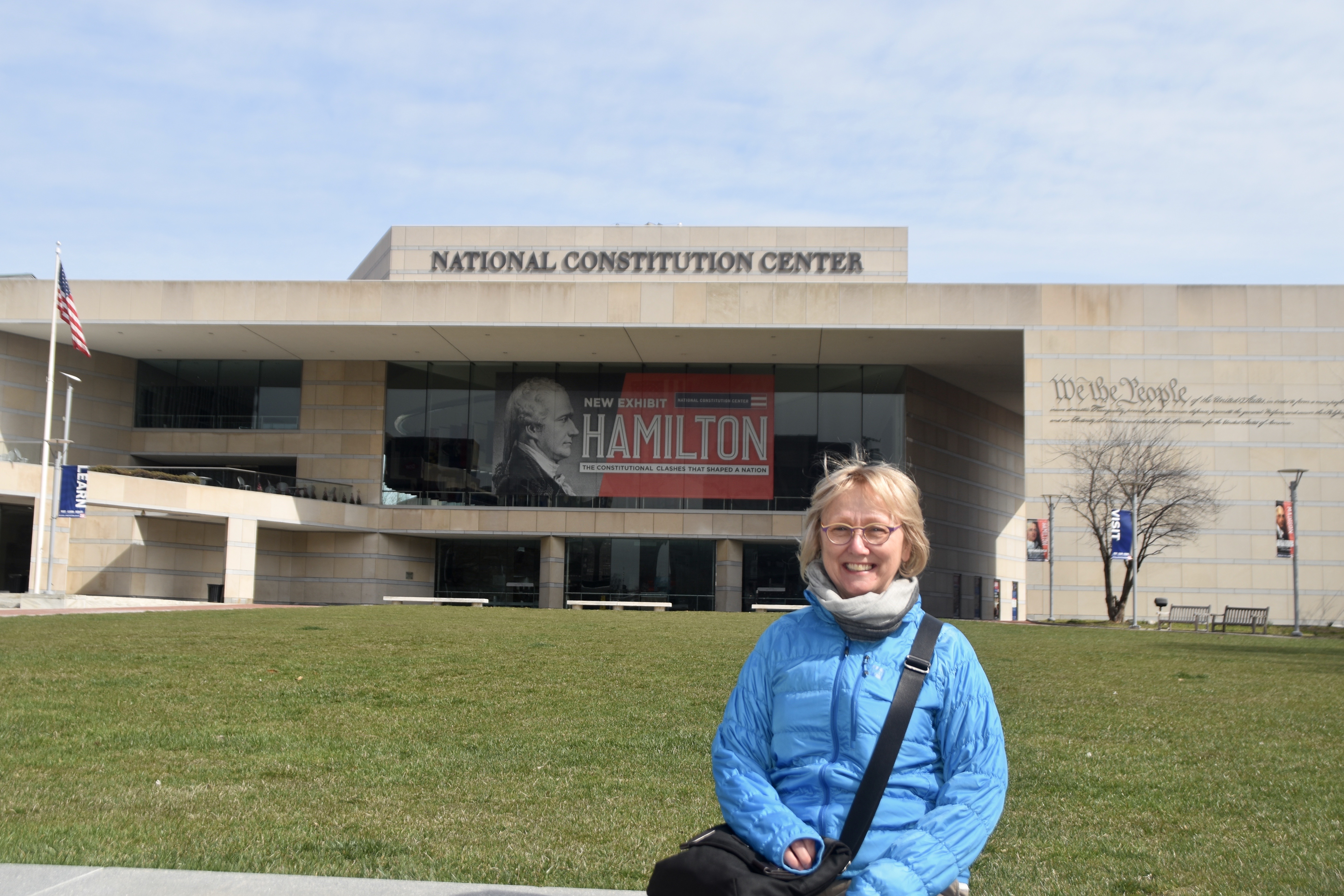
History of the National Constitution Center
Ever since the centennial of the Constitution in 1887 there has been a dream to create a place where the importance of that document could be explained to Americans and anyone else interested in how a democracy is created and evolves. That dream turned into reality with the passage of the Constitutional Heritage Act in 1988 when a bill sponsored by a Democrat was signed into law by a Republican President, Ronald Reagan. It was a bi-partisan effort (remember those?) that created a not-for-profit non-partisan organization to build and oversee the National Constitution Enter in Philadelphia.
The trustees chose the firm of world renowned architect I.M.Pei, Pei, Cobb, Freed & Partners to design and oversee the construction of the building which opened to the public on July 4, 2003. Much of the material used in the exterior walls came from the same sandstone quarry in Indiana as that for the U.S. Capitol Building in Washington. The result is a visually attractive building that complements rather than overwhelms the other buildings around Independence Mall. However, for me, the real attractions of the National Constitution Center are found on the inside, so let’s go in.
Visiting
The rotunda area on the first floor is a vast open space with with a large stone staircase leading up to the second floor where your visit begins.
This is the view from the top of the staircase with all fifty state flags plus those of the U.S. Territories displayed in the order in which they joined the union or where acquired. It’s an impressive array.
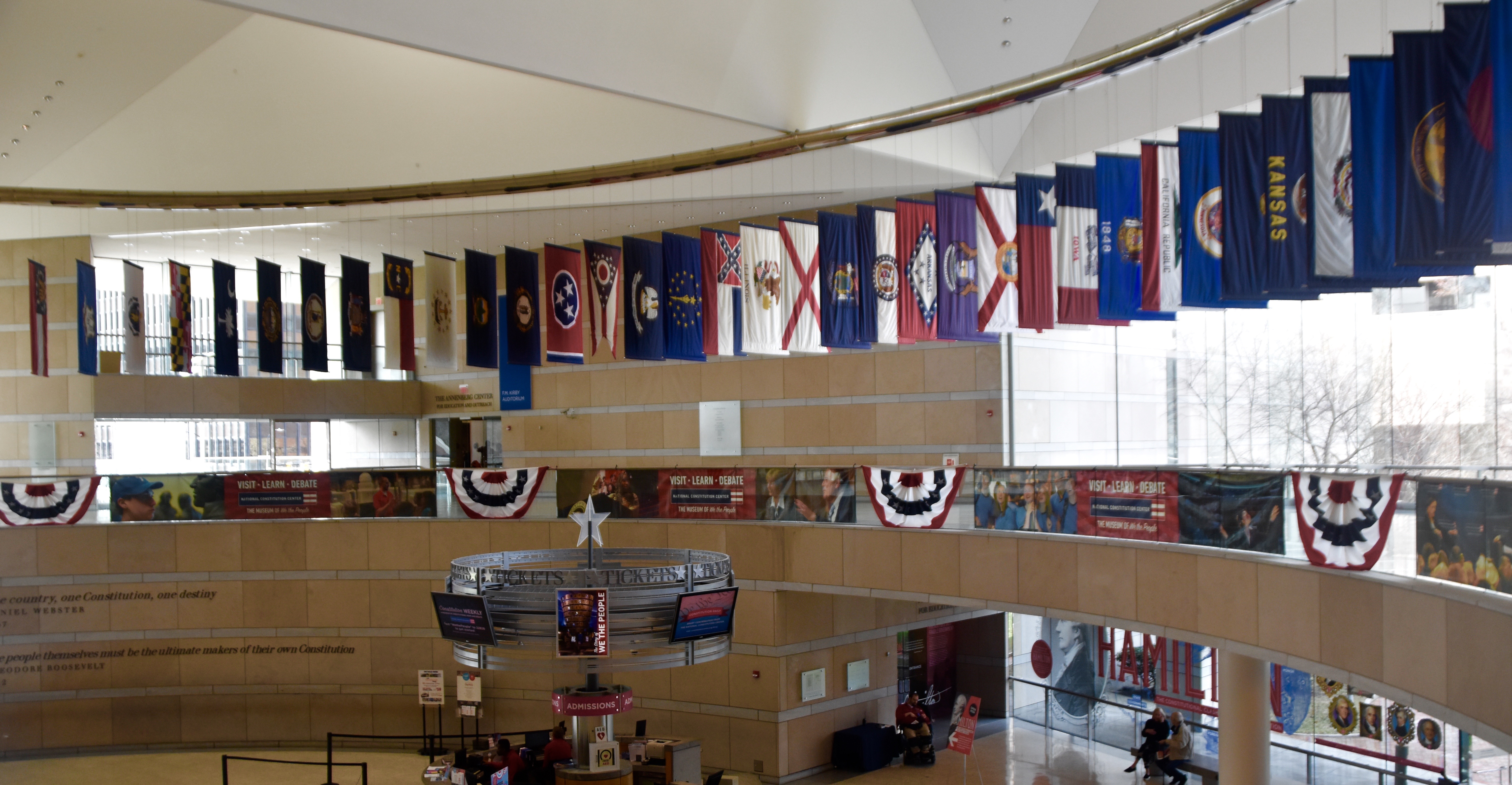
The second floor is divided into two distinct parts. The interior is actually a large circular theatre that extends down into the first floor. Here you should start your visit by entering the theatre and watching the excellent multi-media presentation Freedom Rising which is hosted by a live actor and gives a synopsis of events before and after the signing of the U.S.Constitution. Upon exiting a docent gives a brief rundown of what to expect for the rest of your visit.
The theatre is completely surrounded by a circular exhibition hall where The Story of We the People unfolds chronologically in a combination of state of the art interactive displays, some very rare artifacts and really interesting and unique chances to do things you can’t do in any other museum in the world.
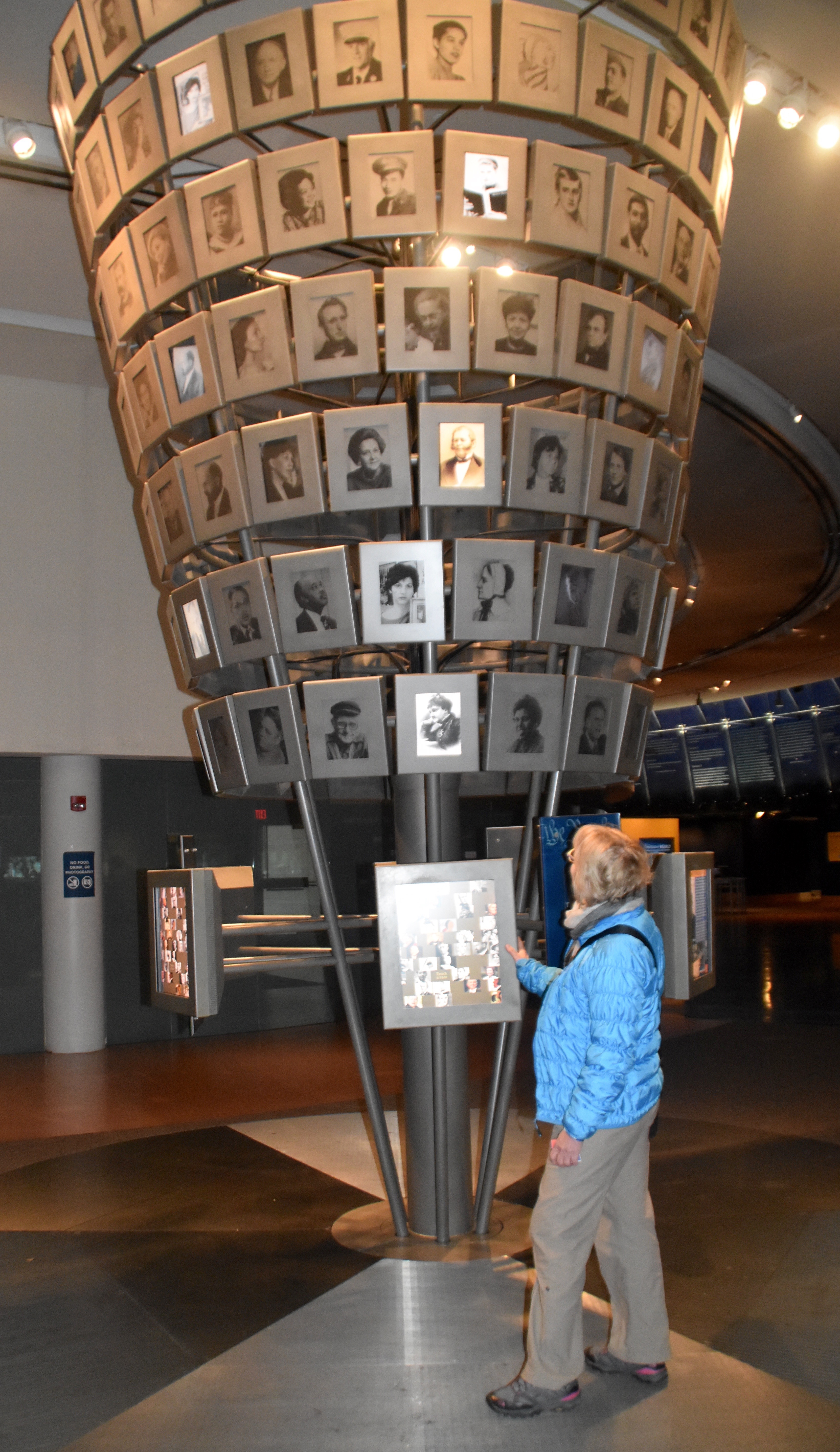
Right off the bat you come across the American National Tree where, by simply touching on a face you can learn how one hundred different Americans, some very famous, others not so much, made contributions to American constitutional development. Alison, as a constitutional lawyer by trade, was fascinated by this exhibit and many others that touched on a subject that I expect most people, before visiting the National Constitutional Center, might think was dull. I guarantee my readers that you will find your time in The Story of We the People anything but dull. Expect to spend at least an hour examining the major constitutional crises the U.S. has faced, including creation of the Bill of Rights, slavery, women’s rights, segregation, civil rights, World Wars and more.
Here is a stack of law books creating DNA like double helixes to illustrate not only how complex the law can be, but more importantly how, like DNA, it must evolve to maintain its fundamental strength and the respect of the people. Only when I looked at this picture after editing it, did I realize how brilliant this display actually is.
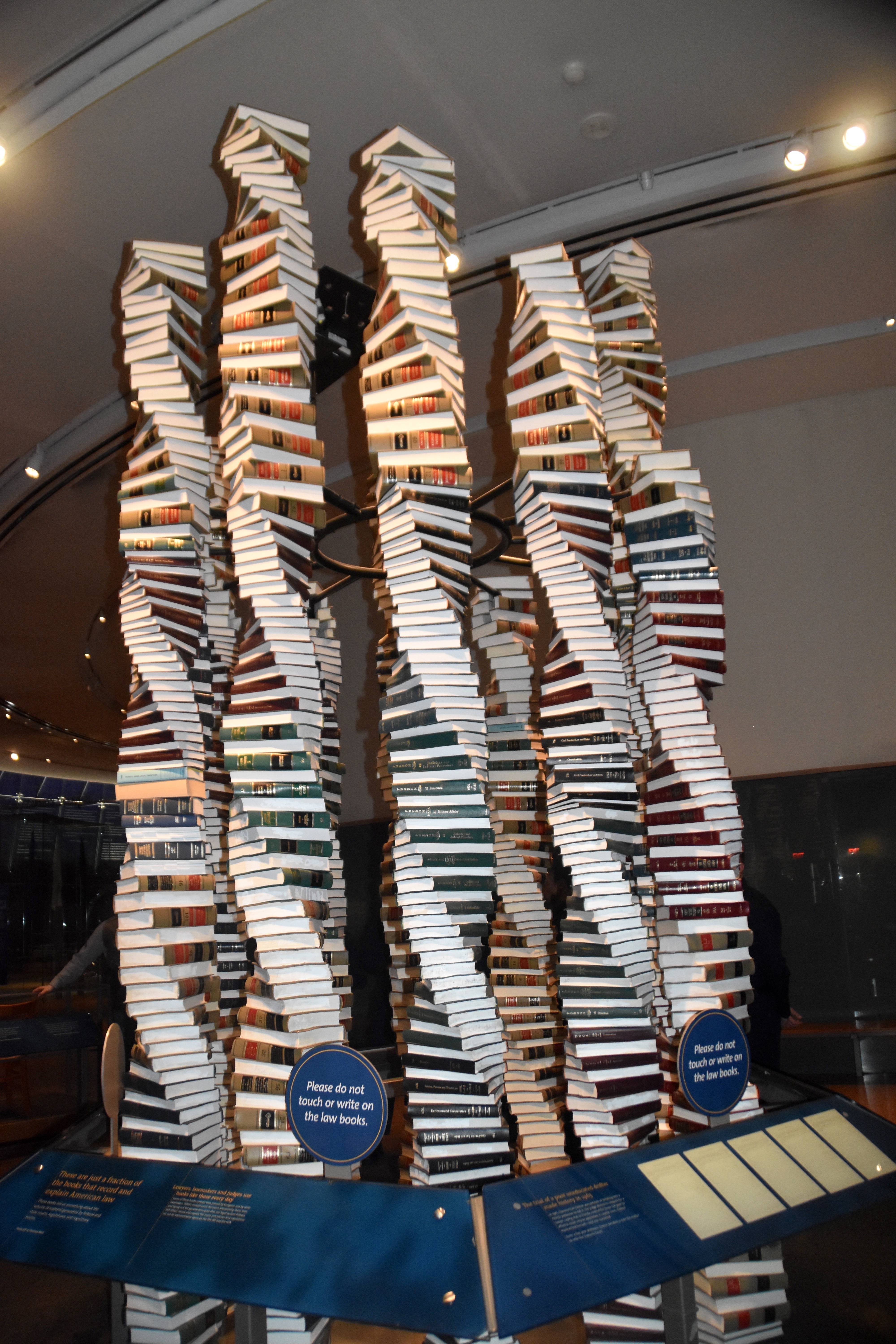
Most of the 44 presidents have a special area detailing their role in constitutional development with some like Washington, Jefferson, Lincoln and FDR occupying more space than others. And yes there is an as yet blank space waiting for No. 45.
The artifacts on display change regularly, but there is one that does not change and that is a first printing of the Constitution. The only more valuable document is the original which is kept in the National Archives in Washington.
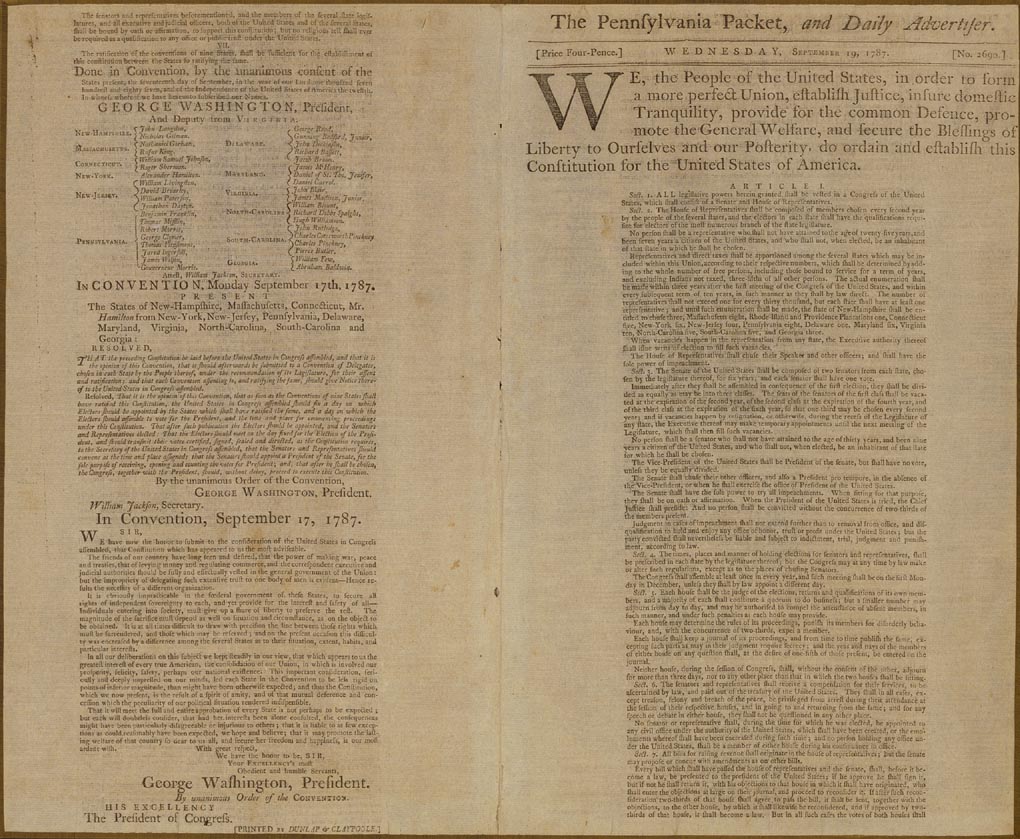
Without doubt, the most popular exhibit has to be the one that allows anyone, even Canadians like Alison and I who are technically ineligible, to be sworn in as President by taking the Oath of Office. You stand at the podium and repeat each sentence after the Chief Justice speaks it.
It was really nice of Jimmy Carter, George Bush, Bill Clinton, W. and of course, Obama to show up for my inauguration.
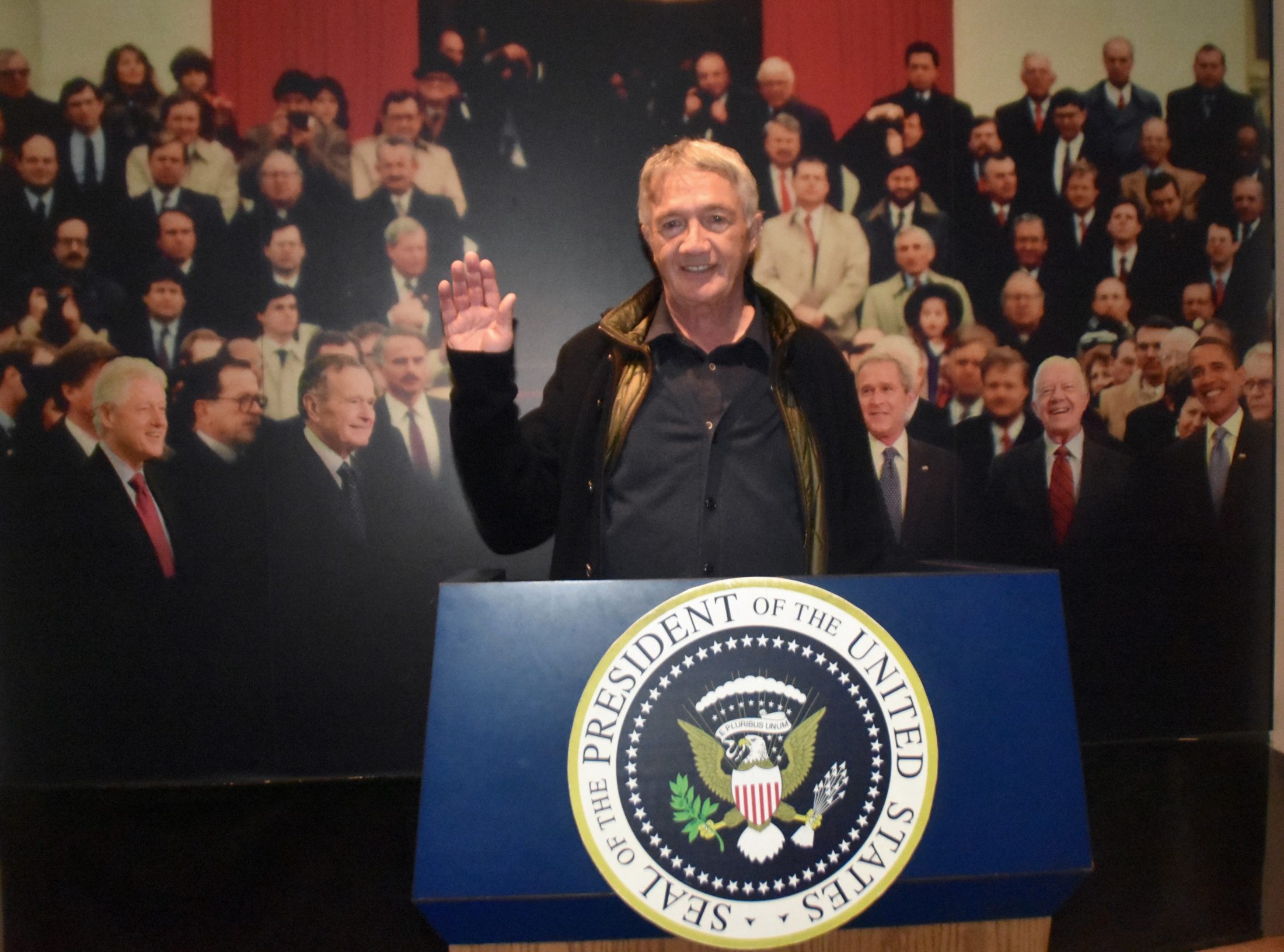
Alison had the honour of becoming the first female President – sorry about that Hilary.
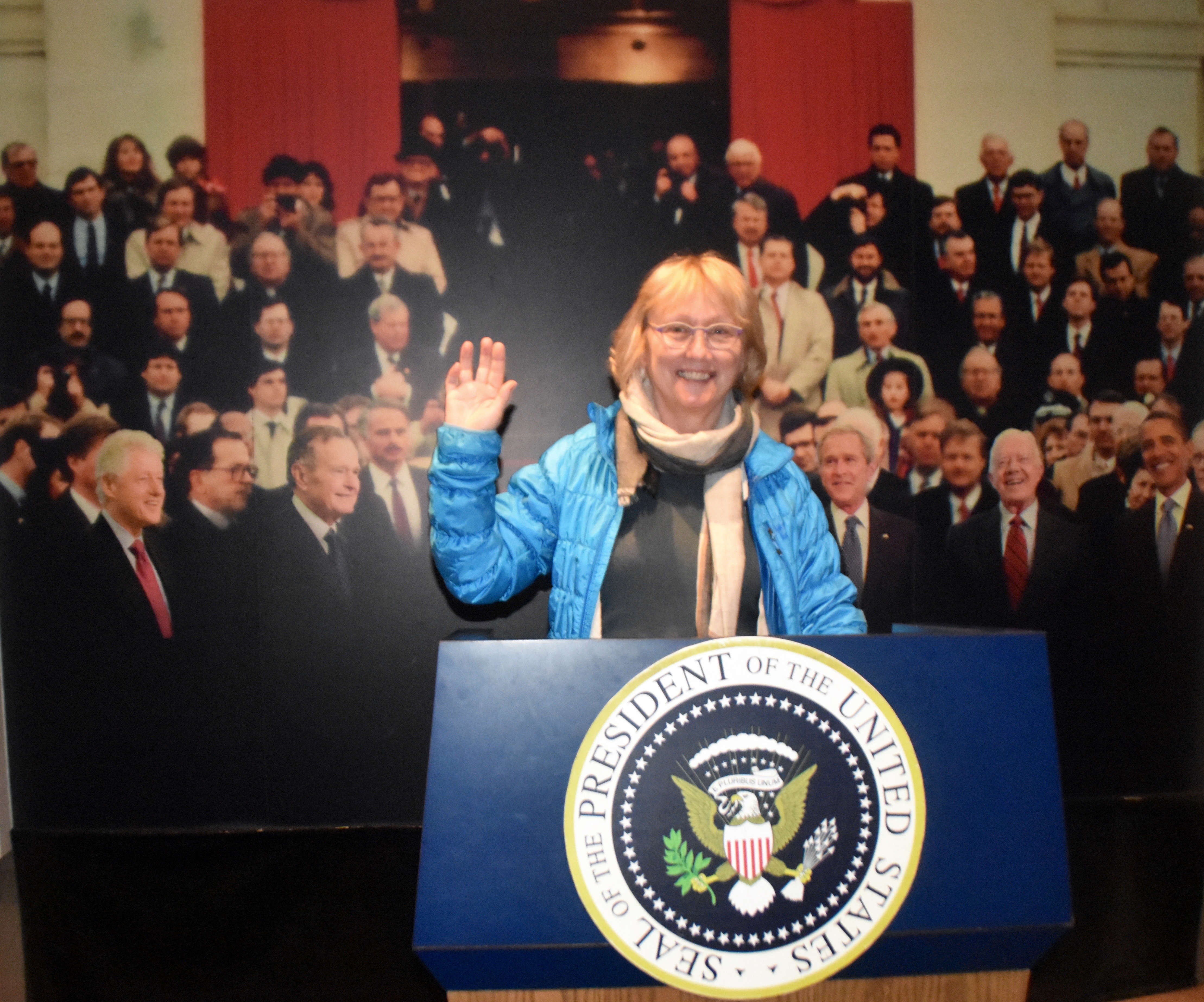
One thing I was impressed with while touring The Story of We the People was how many school groups and more importantly I think, law enforcement officers in training were being given guided tours. Nothing is more important to the survival of a democracy than adherence to and respect for the rights of the people granted by the Constitution. I am sure that was the lesson being taught to these aspiring lawmen and women and I hope they learned it well.
After leaving The Story of We the People there is one final stop on the first floor, Signer’s Hall which should blow you away. Here you will find life size bronze statues of the 42 members of the Constitutional Convention in active poses that you can walk between, identify each by name and of course get photos.
Here is the Pennsylvania delegation with Ben Franklin as the éminence grise of not only Pennsylvania, but the entire group.
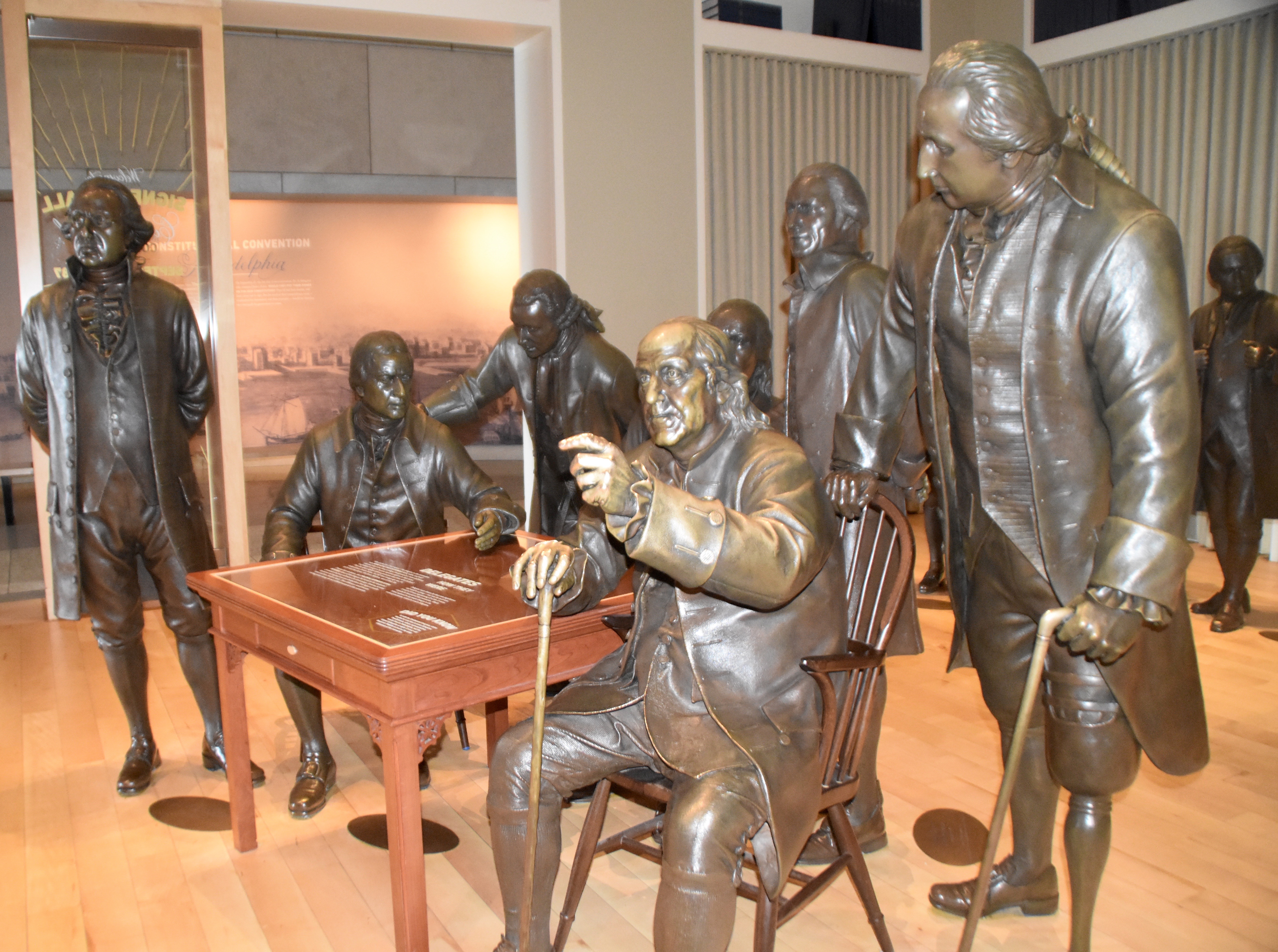
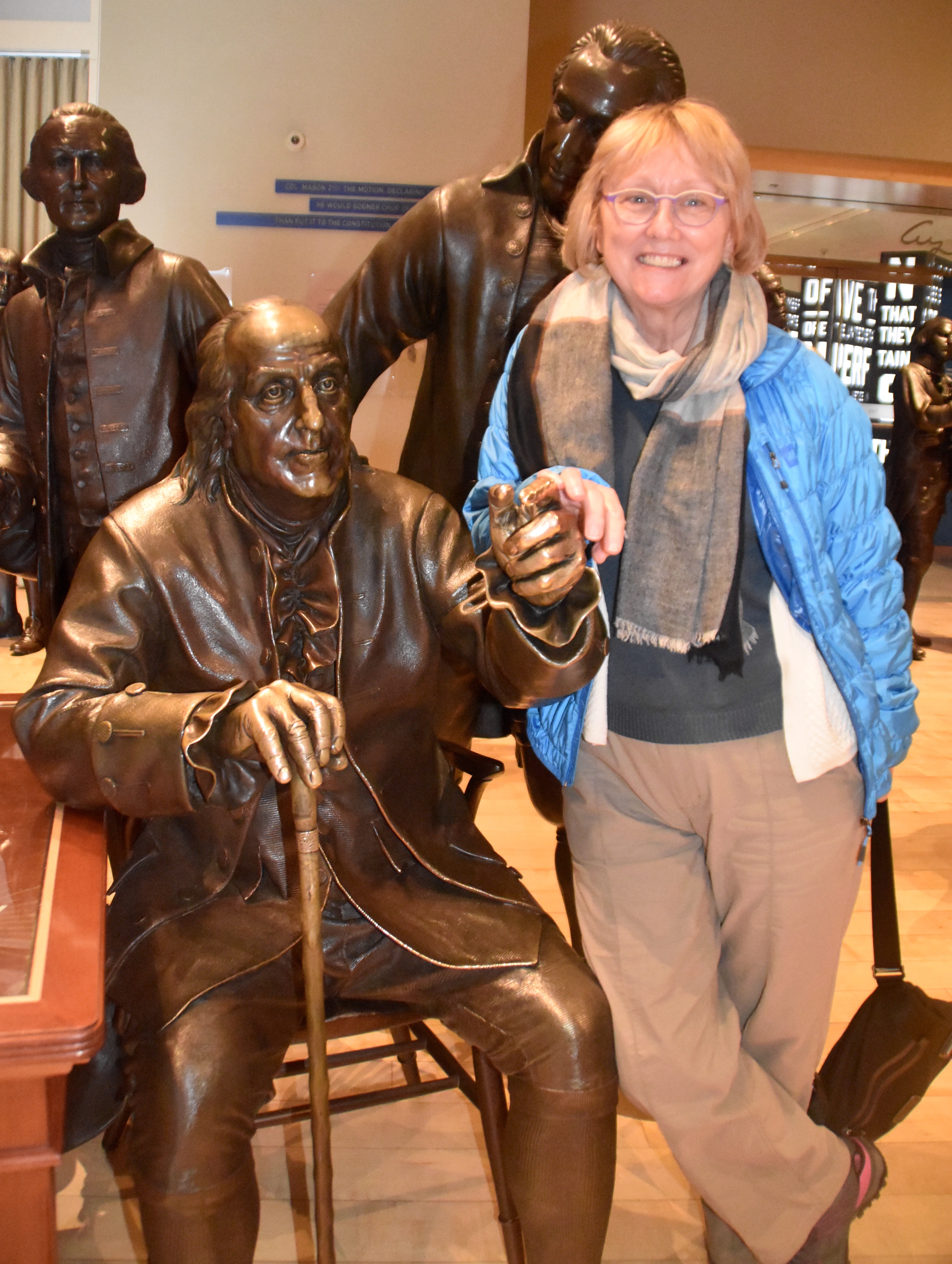
I continue my poses with George Washington. Being life size, you can see just how tall and imposing a figure Washington struck.
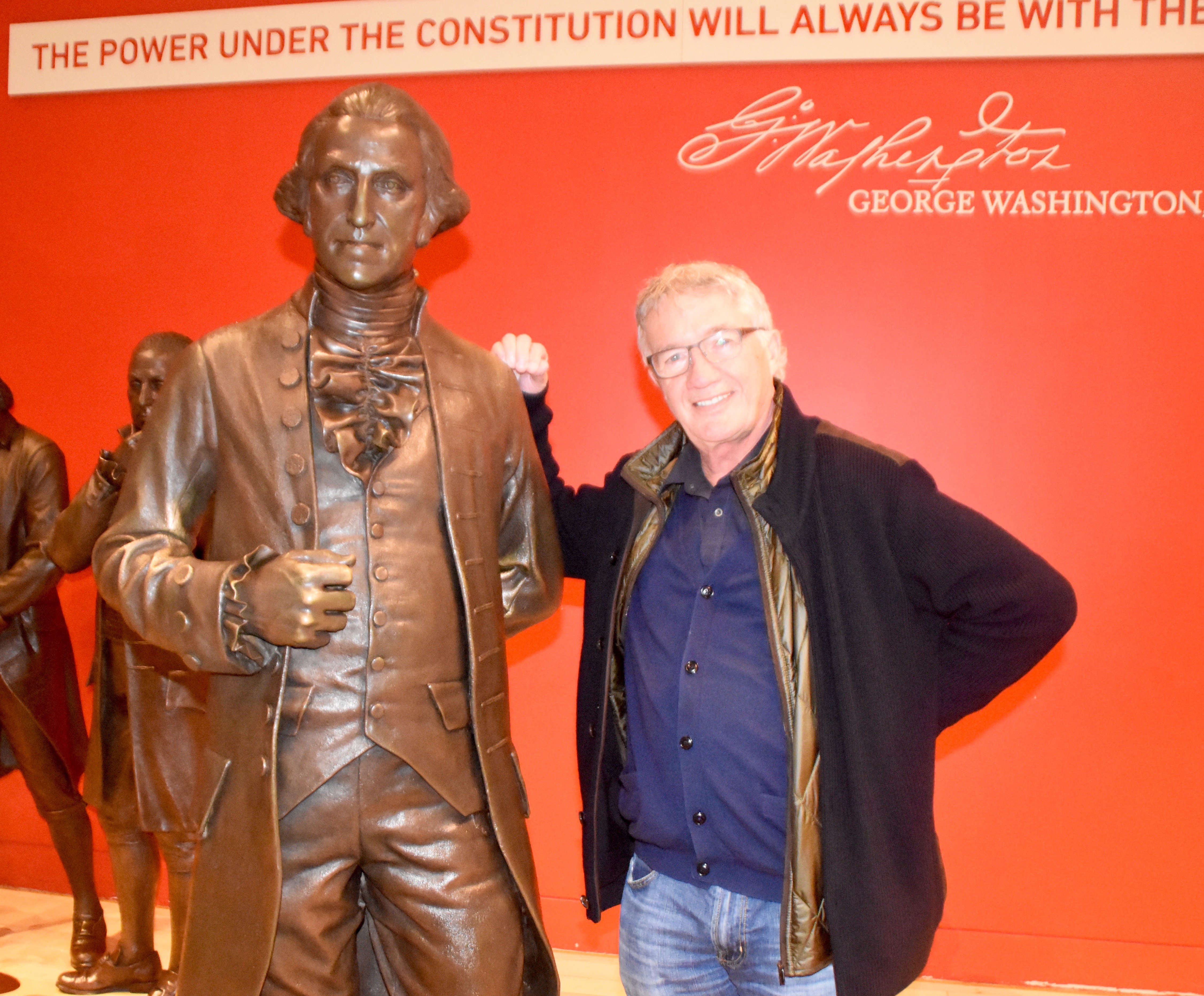
Exiting Signer’s Hall don’t overlook the excellent gift shop where you can pick up your own copy of the U.S. Constitution or any type of souvenir you can imagine associated with it.
For us, the National Constitution Center was the icing on the cake of a visit to the great and important sites around Independence National Historic Park. Don’t overlook it on your visit.

